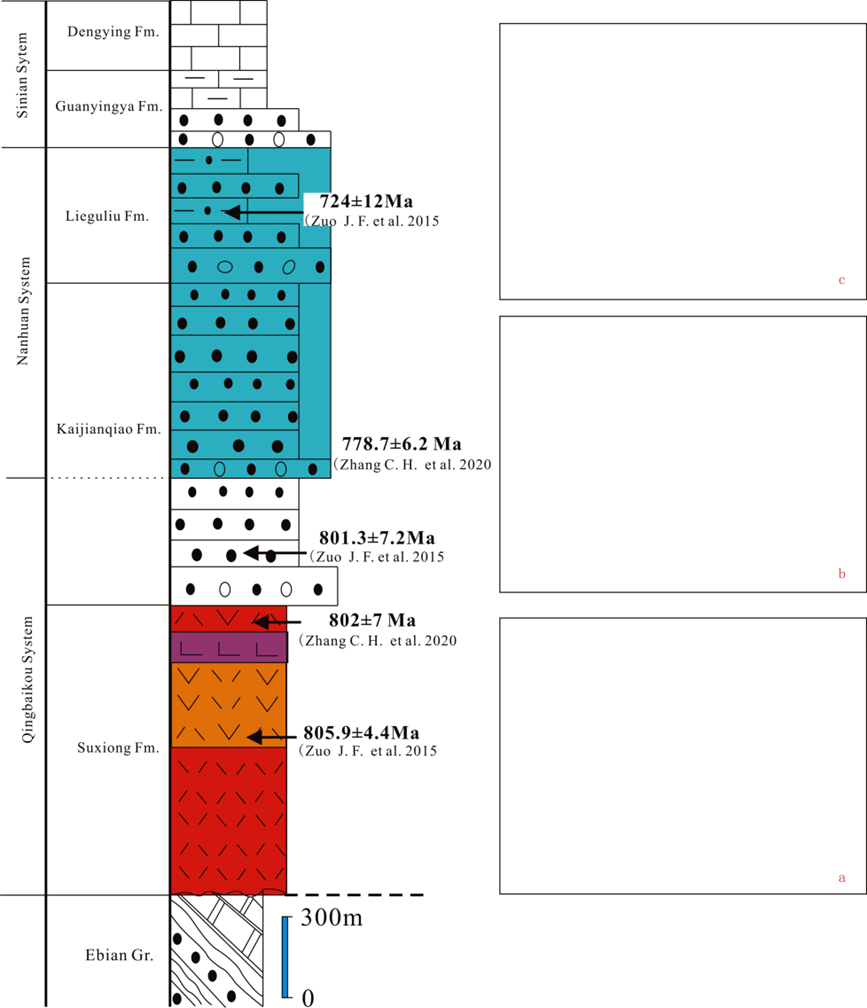Suxiong Fm
Type Locality and Naming
South-central Sichuan. The Suxiong Fm was named by the No. 1 Party of Regional Geological Survey, Sichuan Bureau of Geology in 1965 and formally quoted in 1971 on the Guidebook of 1: 200 000 Scale Regional Geological Map of Mabian Sheet. The typical section is situated in Suxiong of Ganluo County, Sichuan Province.
Synonym: (苏雄组)
Lithology and Thickness
The Suxiong Formation is composed of terrestrial basic to acidic volcanic rock and pyroclastic rock. Lower part is greenish gray tuff intercalated with minor basalt and dacite. Middle part is intermediate to acidic lava. Upper part is dominated by tuffaceous sandstone, tuffite and basalt. The thickness varies from over 10 to about 6000 m.
[Figure: Schematic stratigraphic column with dated horizons of the Suxiong Fm, Kaijianqiao Fm, Lieguliu Fm, Guanyingya Fm and Denying Fm in the Ganluo area of Sichuan Province.]
Relationships and Distribution
Lower contact
The base unconformably overlies the underlying Ebian Gr
Upper contact
The top is a bed of massive compact basalt that is disconformably overlain by the Kaijianqiao Fm
Regional extent
South-central Sichuan. The Suxiong Formation is dominantly distributed in Daxiang Mts., Xiaoxiang Mts, Ganluo and Ebian area, and fragmentarily south of Baoxing and Erlang Mountain, Sichuan Province.
GeoJSON
Fossils
Age
Depositional setting
Additional Information
